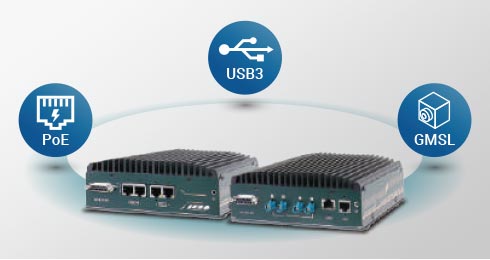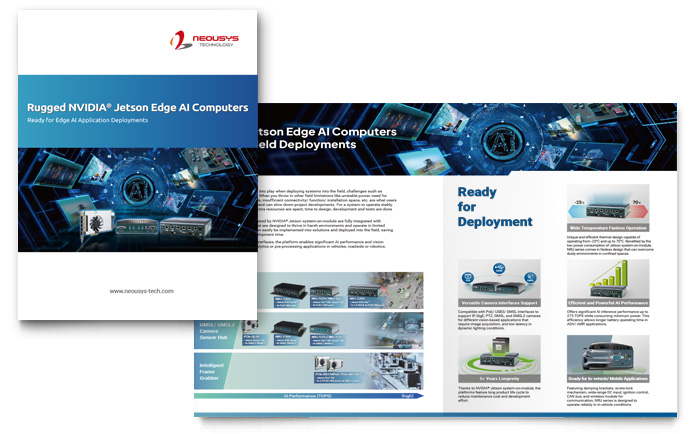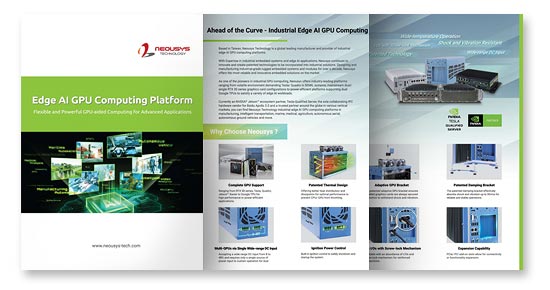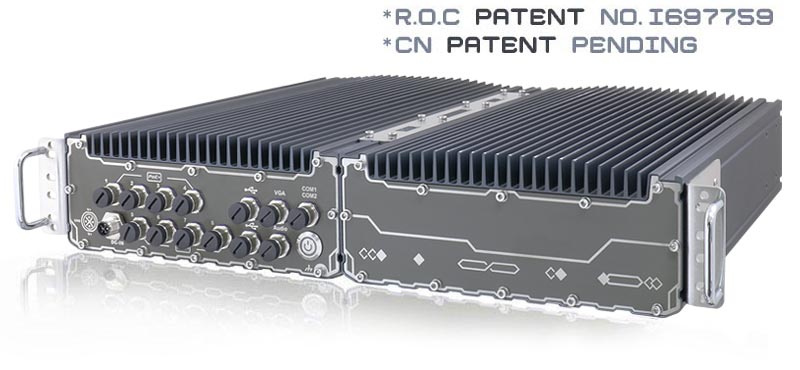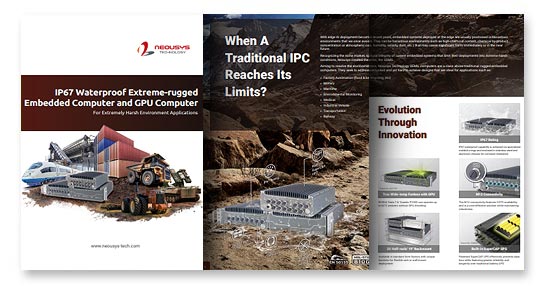概要
NeousysのNVIDIA® Jetson™製品は、進化を続けるエッジAIアプリケーションに対応すべく設計されています。エッジ検査、路側アプリケーション、AMRなどから、車載IVAやADASなどにおよび、産業グレードの電源設計と熱設計を活かし、オンボードのカメラ接続機能と組み合わせ、小型ソリューションながら豊富な拡張機能を提供します。コンパクトなエンクロージャに収まるNeousysのNVIDIA Jetson製品は、高効率のJetson SoMで駆動され、エッジでサーバーグレードの推論性能を発揮します。このため、工場、路側インフラ、ロボット、オフロード車両でビジョンベースのAIアプリケーションに最適です。
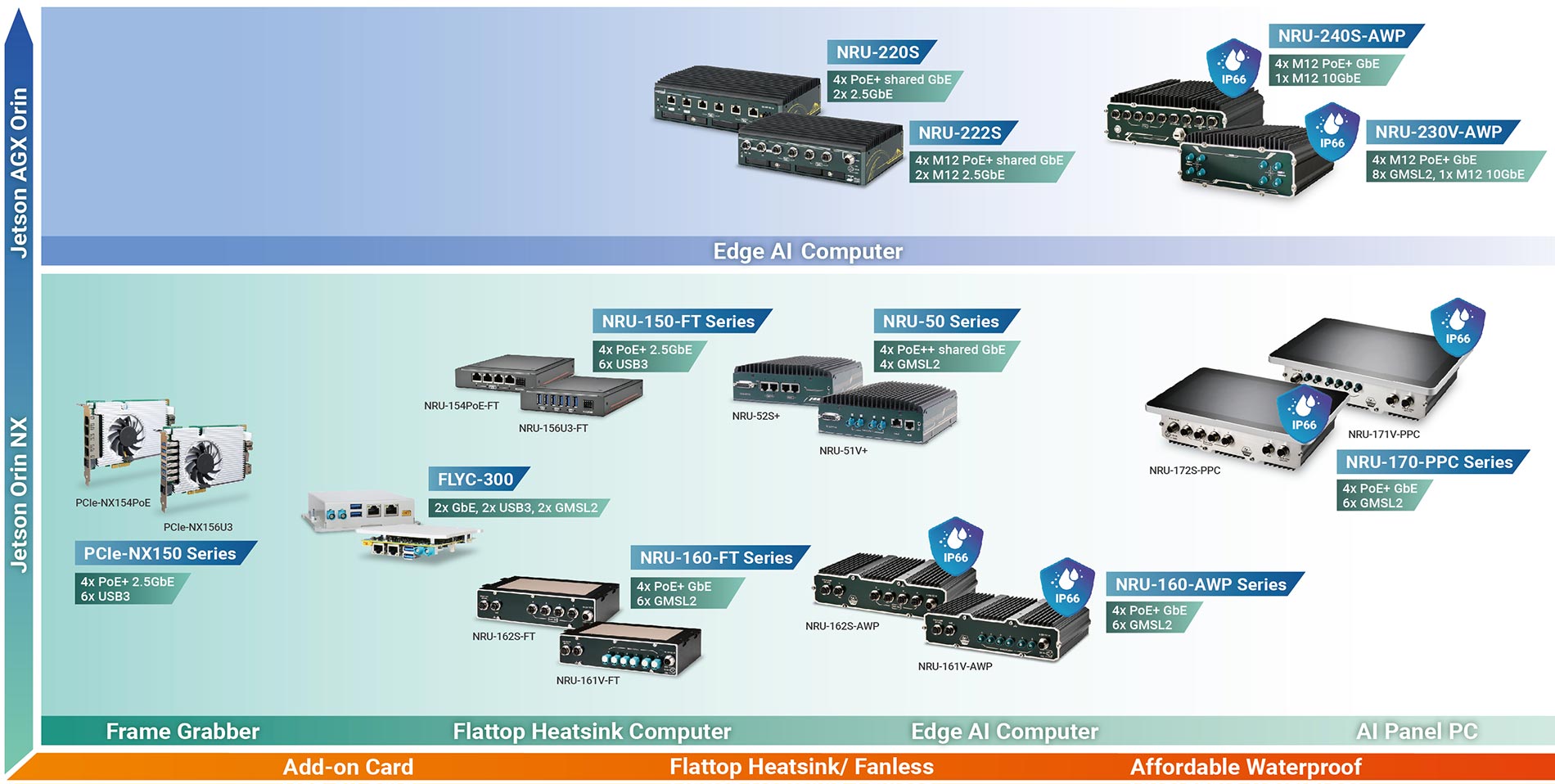
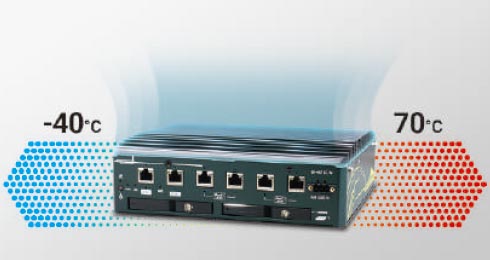
耐下し、ファンレスと水辺性
-40°Cから+70°Cまでファンレス環境で操作可能。
車内/移動デプロイメント向け
車内の困難な環境での信頼性の高い操作に配慮して設計されています。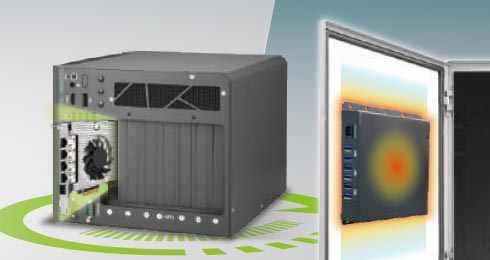
多様な形態フォーム
AIフレームグラバー、フラットトップヒートシンクコンピュータ、ミッションコンピュータなど。工場から道路にいたるまでの堅牢なAIビジョン
エッジ検査
状況
これまで、CPUベースのアーキテクチャはよく生産ラインの清掃、検査、仕分け、梱包などのアプリケーションに自動化プロセスが使用されていました。自動化全体の効率と精度を強化するため、既存のCPUベースの自動化プロセスへAI性能を統合して強化することは、新しいトレンドになっています。
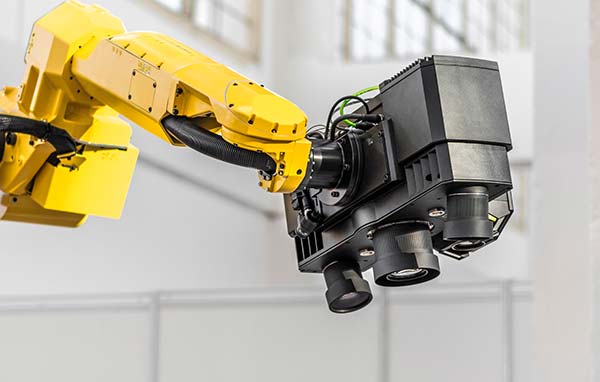
課題
AI演算処理を従来のCPUベースの19インチラックマウントまたは拡張ボックスPCへ統合する場合、以下のような課題があります:
- 複数のカメラから送られる画像をリアルタイムに処理し、大幅なAI性能の必要性
- 消費電力の大きなGPUカードへ十分な電力を供給できない状況
- CPUカードの放熱に対応する課題
- GPUカードとフレームグラバーカードをインストールする拡張スロットの不足
Neousysの産品
Neousysが発表した産業グレードのインテリジェントフレームグラバー、PCIe-NX150シリーズと、フラットトップヒートシンク搭載エッジAIコンピューター、NRU-150-FTシリーズは、既存のCPUベースのマシンビジョンと検査システムでAI性能を強化するべく設計された軽量ソリューションです。これらはカメラ接続、100 TOPSのAI性能を確保するために全帯域のUSB3ポート x6またはPoE+ GbEポート x4を搭載し、同時に堅牢な広範囲温度の動作を保証します。
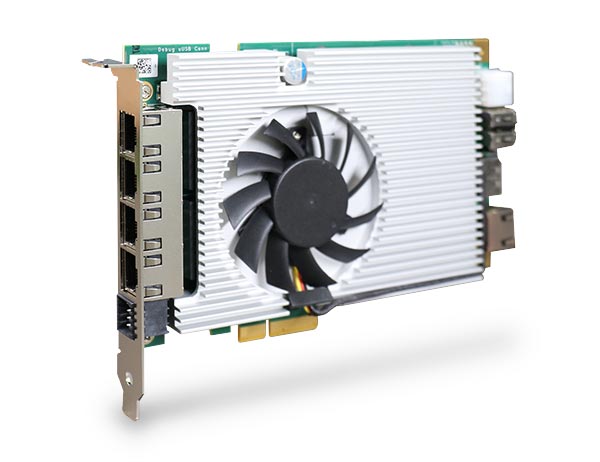
|

|
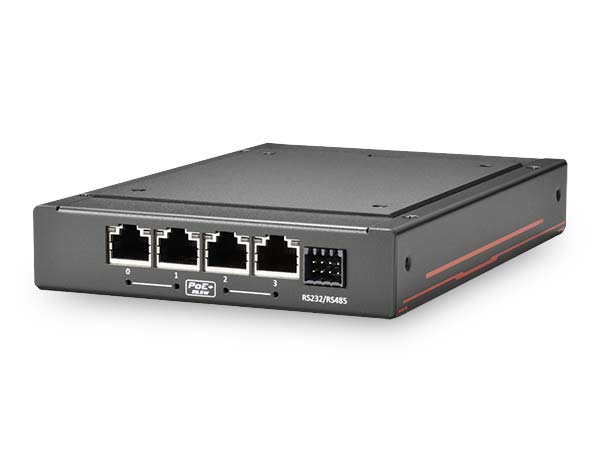
|
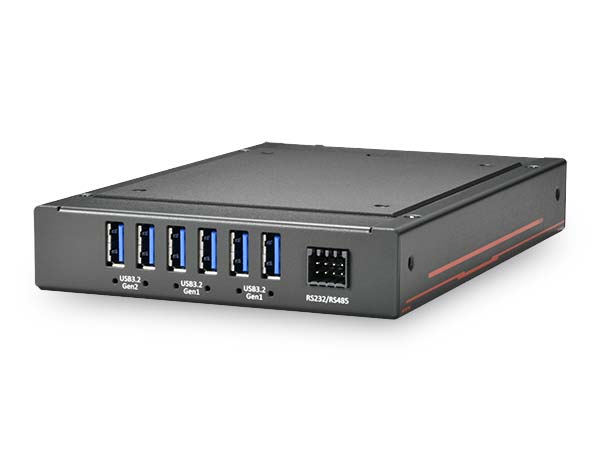
|
PCIe-NX154PoENVIDIA® Jetson Orin™ NXインテリジェントフレームグラバーカード、PoE+ポート x4 |
PCIe-NX156U3NVIDIA® Jetson Orin™ NXインテリジェントフレームグラバーカード、USB 3.2ポート x6 |
NRU-154PoE-FTNVIDIA® Jetson Orin™ NXフラットトップヒートシンクエッジAIコンピューター、2.5GbE PoE+ポート x4 |
NRU-156U3-FTNVIDIA® Jetson Orin™ NXフラットトップヒートシンクエッジAIコンピューター、USB3.2ポート x6 |
路側IVA
状況
都市部のインフラの発展により、AIに対応される場所も多くなってきました。インテリジェント交通やV2X通信、公共空間のIVAなど、路側エッジAIコンピューターをリアルタイムの画像取得と処理へ投入する必要に迫られています。
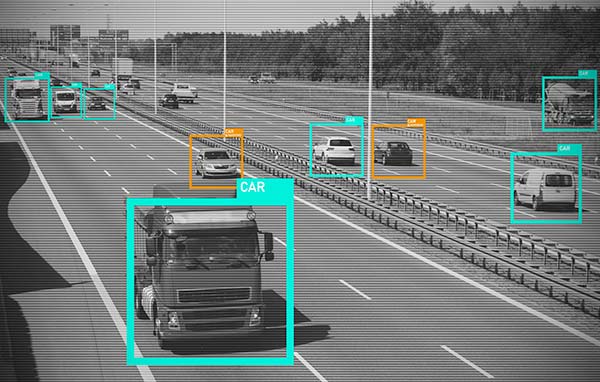
課題
路側キャビネットへエッジAIコンピューターを実装する場合、以下の課題が存在します:
- 複数のカメラから送られる画像をリアルタイムに処理し、大幅なAI性能の必要性
- 厳寒の冬から灼熱の夏まで、極端な天候温度への対処
- キャビネット内の放熱
- 路側環境のためコンピューター内部に埃が堆積
Neousysの産品
NRU-220S、NRU-52S+、NRU-154PoE-FTは、複数のPoE+/ PoE++ IPカメラの接続機能を内蔵し、ファンレスAI NVRカメラです。広範な動作温度範囲を念頭に設計されたこれらデバイスは、路側アプリケーションでインテリジェントなビデオ分析を支援します。さらに、シームレスなインフラ通信を行えるよう、絶縁型のRS-484インターフェースを備えます。
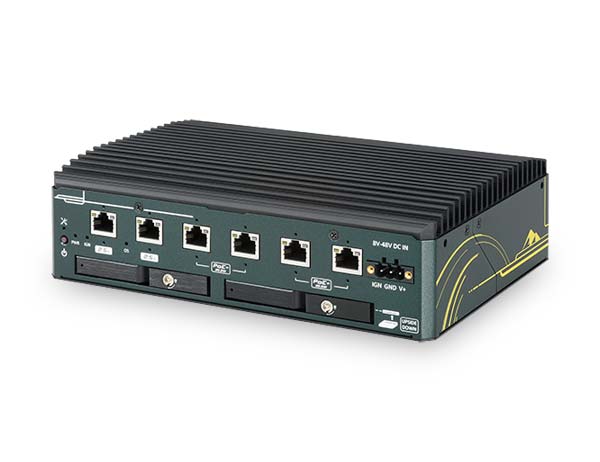
|

|

|
NRU-220SNVIDIA® Jetson AGX Orin™ AI NVR、PoE+ GbE共有ポート x4 & 2.5GbEポート x2 |
NRU-52S+NVIDIA® Jetson Orin™ NXエッジAIコンピューター、PoE++ポート x4 |
NRU-154PoE-FTNVIDIA® Jetson Orin™ NXフラットトップヒートシンクエッジAIコンピューター、2.5GbE PoE+ポート x4 |
自律型モバイルロボット
状況
スマート農業、自律型倉庫、ラストマイル配送など、自律型モバイルロボット(AMR)の数は増える一方です。AMRが周囲環境とやりとりできるようにするには、複数のセンサーと十分なAI性能を準備する必要があります。
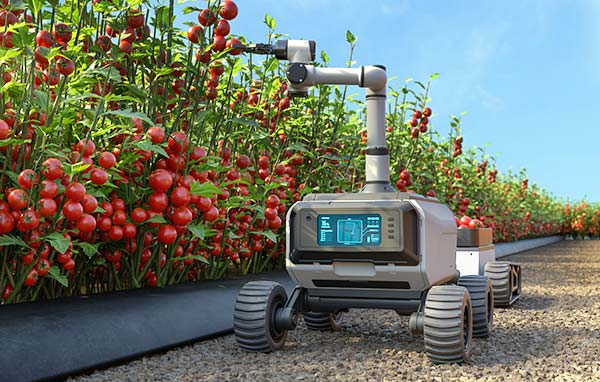
課題
演算ユニットをロボットへ統合する場合、以下の課題に直面する可能性があります:
- 複数のカメラとセンサーの接続
- 複数のカメラから送られる画像をリアルタイムに処理する、大幅なAI性能の必要性
- 限られた実装用の空間
- 放熱
- 駆動用のバッテリー容量の制限
- 衝撃と振動の考慮
- モバイル通信機能
Neousysの産品
NRU-51V+、NRU-52S+、FLYC-300、NRU-156U3-FTは、IP、GMSL2、USB3カメラ接続機能を持ち、20W Jetso Orin NXコンピューターです。これらは狭い空間に適した広範囲温度のファンレス動作と小型サイズを提供し、倉庫、ラストマイル配送、農業用モバイルロボットなど、屋内と屋外の環境に理想的です。NRU-52S+とNRU-51V+シリーズは広範囲DC入力と内蔵のイグニッションパワーコントロールを特徴とし、モバイル通信用に柔軟な拡張オプションを備えます。FLYC-300は300gの超軽量型エッジAIコンピューターであり、ドローンアプリケーションと軽量ロボットに適しています。

|

|

|

|
NRU-51V+NVIDIA® Jetson Orin™ NXエッジAIコンピューター、GMSL2ポート x4 |
NRU-52S+NVIDIA® Jetson Orin™ NXエッジAIコンピューター、PoE++ポート x4 |
FLYC-300Jetson Orin NXドローンミッションコンピューター、GbE x2、USB3 x2、GMSL2 x2 |
NRU-156U3-FTNVIDIA® Jetson Orin™ NXフラットトップヒートシンクエッジAIコンピューター、USB3.2ポート x6 |
車載IVA & ADAS
状況
車両でのインテリジェントなビデオ分析は、衝突回避、認識、検出機能を実装する際に不可欠な役割を果たすため、車載ADAS機能と全体的な安全性を強化します。こうしたアプリケーションはオフロード車両のADAS、遠隔操作、鉄道侵入検出などの領域にも応用できます。
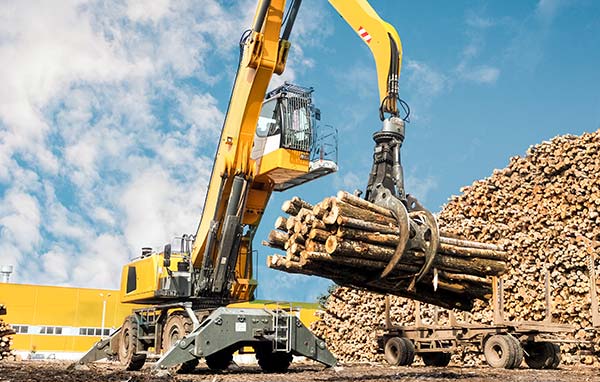
課題
車両で安定した実装を行うために、コンピューティングシステムは以下の課題を克服する必要があります:
- 複数のカメラとセンサーの接続
- 複数のカメラから送られる画像をリアルタイムに処理する、大幅なAI性能の必要性
- 限られた実装用の空間
- 放熱
- 駆動用のバッテリー容量の制限
- 絶え間ない衝撃と振動
- モバイル通信機能y
- 採掘、農業、建築現場などの過酷な環境
Neousysの産品
NRU-220S、NRU-222S、NRU-52S+はIPカメラに対応するためGbE PoE+/PoE++ポートを備えており、堅牢な接続技術を提供します。NRU-51V+は一歩進んで車載カメラ用にGMSL2ポートも提供しており、様々な照明条件で低レイテンシと高画質を必要とするアプリケーションに最適です。すべてのモデルは広範囲温度のファンレス動作、耐衝撃性と耐振動性、広範囲DC入力、イグニッションパワーコントロール、モバイル接続、柔軟な拡張機能を小さな設置面積に収め、車載実装で十分に活躍できます。
ダウンロード資料
無人システム向け SWaP 最適化 AI ミッションコンピュータ
耐環境型 NVIDIA Jetson™ コンピュータによる路側映像解析
耐環境型 NVIDIA® Jetson™ PC による AMR 支援
NVIDIA® Jetson™ コンピュータで実現するオフロード車両向け ADAS
過酷環境向け Neousys 扁平ヒートシンク ファンレスPC
8 カメラ同期とガラス間遅延(Glass-to-Glass)
3 段階露出 HDR(>120dB)
| Year | Subject | Download |
| 2022 | Notice of the Annual General Shareholders' Meeting |  |
| 2021 | Notice of the Annual General Shareholders' Meeting |  |
Shareholders Meeting
| Date | Meeting Type | Annual Report | Meeting Notice | Meeting Handbook | Meeting Minutes | Shareholders' Meeting Video |
| 2025/06/24 | AGM | Download | Download | Download | Download | Video Link |
| 2024/06/24 | AGM | Download | Download | Download | Download | Video Link |
| 2023/06/26 | AGM | Download | Download | Download | Download | |
| 2023/02/15 | EGM | Download | Download | Download | ||
| 2022/12/2 | EGM | Download | Download | Download |
The Board of Directors
The company's highest strategy and management body, Neousys Technology's board of directors, in addition to formulating various laws and regulations in accordance with relevant laws and regulations and the powers conferred by the shareholders' meeting, also supervises various implementation results.
Important responsibilities of the board of directors:
- Review the company's business plan
- Review the company's financial reports
- Establish an effective and appropriate internal control system
- Supervise and deal with various risks faced by the company
- Planning and formulating the company's business directions and strategies
- Appointment and dismissal of financial, accounting or internal audit supervisors
Diversity and independence of the Board of Directors:
Our company is committed to strengthening corporate governance and promoting the soundness of the composition and structure of the Board of Directors by respecting and advocating for the goal of board diversity. We hope that our diversity policy will contribute to enhancing the overall operational performance of the company. The selection of our Board members is based solely on merit, with a focus on gender equality and the necessary knowledge, skills, and qualities required for the role.
Currently, our Board of Directors consists of five general directors and four independent directors. The diversity policy and its implementation are as follows:
| Diversified core projects | Basic Components | Capabilities | ||||||||||||||
| Nationalit | Gender | Concurrently serving in the company | Age | Term | Ability to make Operational Judgement | Ability to perform accounting and financial analysis | Ability to conduct management administration | Ability to conduct crisis management | Knowledge of the industry | An international market perspective | Ability to lead | Ability to make policy decisions | ||||
| 40~49 | 50~59 | Over 60 |
Less than 3 year |
|||||||||||||
| Chairman | James Gau | ROC | Male | ✓ | ✓ | ✓ | ✓ | ✓ | ✓ | ✓ | ✓ | ✓ | ||||
| Director | CT Hu | ROC | Male | ✓ | ✓ | ✓ | ✓ | ✓ | ✓ | ✓ | ✓ | |||||
| Director | Chris Ni | ROC | Male | ✓ | ✓ | ✓ | ✓ | ✓ | ✓ | ✓ | ✓ | |||||
| Director | Ahong Chen | ROC | Male | ✓ | ✓ | ✓ | ✓ | ✓ | ✓ | ✓ | ||||||
| Director | Celia Hsu | ROC | Female | ✓ | ✓ | ✓ | ✓ | ✓ | ✓ | ✓ | ||||||
| Independent Director |
Ryan Chen | ROC | Male | ✓ | ✓ | ✓ | ✓ | ✓ | ✓ | ✓ | ✓ | ✓ | ||||
| Independent Director |
Grant Kuo | ROC | Male | ✓ | ✓ | ✓ | ✓ | ✓ | ✓ | ✓ | ✓ | ✓ | ||||
| Independent Director |
Sean Fan | ROC | Male | ✓ | ✓ | ✓ | ✓ | ✓ | ✓ | |||||||
| Independent Director |
Ray Lai | ROC | Male | ✓ | ✓ | ✓ | ✓ | ✓ | ✓ | ✓ | ✓ | |||||
All current directors of our company have experience in the management or operations of various industries. In the future, we will revise our diversity policy as necessary, based on the operation of the Board, business model, and development needs, to ensure that Board members generally possess the knowledge, skills, and qualities required for their duties.
According to the company's articles of association, the Board of Directors consists of 5 to 9 members, including five general directors and four independent directors. Independent directors account for 44.44% of the total board members, and the combined number of independent and external directors exceeds half of the total Board members. Currently, 89% (8 members) of the Board are male, and 11% (1 member) are female. We will strive to increase the number of female directors in the future to achieve the goal of gender equality on the Board.
All independent directors of our company comply with the relevant regulations of the Financial Supervisory Commission's Securities and Futures Bureau, and there are no circumstances among the directors and independent directors that fall under Article 26-3, Paragraphs 3 and 4 of the Securities and Exchange Act.
Board of Directors
| Job Function | Title | Experience and Education | Current Positions Held |
| Chairman | James Gau |
|
|
| Director | CT Hu |
|
|
| Director | Chris Ni |
|
|
| Director | Ahong Chen |
|
|
| Director | Celia Hsu |
|
|
| Independent Director | Ryan Chen |
|
|
| Independent Director | Grant Kuo |
|
|
| Independent Director | Sean Fan |
|
|
| Independent Director | Ray Lai |
|
|
Sustainable Development Policy
Neousys Technology has always upheld a spirit of innovation and continual improvement, dedicating itself to developing rugged edge computing devices that closely align with market demands, which are provided to advanced application integrators worldwide, enabling SMART applications and contributing to the progress of human civilization through technology. As a corporate citizen, Neousys Technology not only focuses on contributing through its professional field but is also committed to leveraging corporate resources to fulfill diverse corporate social responsibilities and collaborate globally to promote sustainable development. To facilitate sustainable development, Neousys-Technology adheres to its established Sustainable Development Best Practice Principles, pledging active development in Environmental Protection (E), Social Responsibility (S), and Corporate Governance (G). Furthermore, to concretely implement corporate sustainable development policies, we have further defined the following four development areas, hoping to fulfill our commitment to sustainable development through these scopes:
Corporate Governance
- Strictly adhering to the Corporate Governance Best Practice Principles
- Strengthening the function of the Board of Directors
- Safeguarding the rights and interests of shareholders and stakeholders
- Enhancing information transparency
- Facilitating ethical corporate management
Business Operation
- Promoting the development of innovation and intelligence
- Enhancing digital capabilities of business operation
- Establishing a corporate risk management policy
- Optimizing the supplier management policy
- Promoting the corporate paperless policy
- Promoting green manufacturing
- Four development areas of Neousys
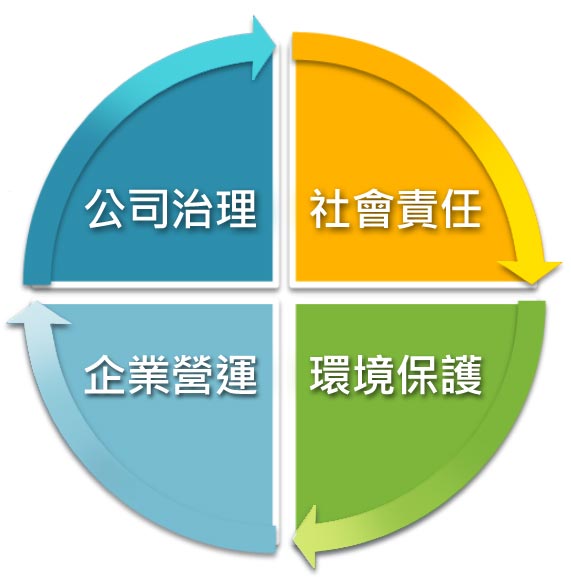
Social Responsibility
- Establishing an explicit human rights policy
- Establishing occupational HSE measurements in compliance with regulations
- Creating a diverse and equal working environment
- Providing comprehensive training courses
- Building up channels for regular employee communications
- Organizing regular charitable activities
Environment Protection
- Establishing an environmental protection policy
- Tracking corporate electricity usage and carbon emissions regularly
- Implementing energy-saving and carbon-reduction measurements
- Organizing environmental protection activities regularly
Sustainable Development Committee
In accordance with the Sustainable Development Best Practice Principles, the Company has established the internal Sustainable Development Committee. The committee is tasked with planning, implementing, and overseeing the Company's sustainable development processes. Comprising five or more members, including senior managers and department heads, the committee is chaired by the President. The detailed responsibilities of the committee are outlined below:
- Stipulating the company's sustainable development direction and goals, devising relevant management policies and specific implementation plans.
- Promoting and materializing initiatives related to the company's sustainable development direction and goals.
- Monitoring, reviewing, and revising the execution and effectiveness of the company's sustainable development.
- Other matters assigned to this committee by the Board of Directors for implementation.
The 2024 Sustainability Committee and Board Meeting Schedule


Stakeholder
Identification:
Neousys Technology defines stakeholders as internal and external groups or individuals that have an impact on or are impacted by the organization's operations. Employees, suppliers, shareholders, and customers are recognized as stakeholders by Neousys Technology.
Neousys Technology collects feedback from these stakeholders through various communication channels, both internal and external. It also considers international trends and standards, customer requirements, and industry practices to identify the issues that are of concern to each stakeholder group. Neousys Technology then formulates response strategies and communication plans for each issue.
Neousys Technology has established various communication and complaint channels for stakeholders to provide feedback and opinions. This is done to understand the stakeholders' reasonable expectations and needs and to provide a response mechanism to address the issues that concern them.
産業PCにとってのエッジAIコンピューティングとは?
データと分析が従来型のデータセンターやクラウドのみに存在していた状態からエッジへシフトしつつあり、産業アプリケーションが自動化から自律化へ移行していることを示唆しています。しかし、産業PCメーカーが提供するエッジAIプラットフォームがほんのわずかなのはなぜでしょう?AIを搭載した産業PCを現場で実装するのは困難だからです。
産業PCへAIを統合する理由
産業PCへAIを統合するのは、人間の頭脳へ学習と推論の能力を加えることに似ていますが、偏見、疲れ、感情の影響がありません。統合することで、効率、精度、生産性を改善できる知能が提供されます。
AIを産業PCへ統合する際の課題とは?
すでに小型化され換気の不十分な組込みエンクロージャへGPUカードまたはグラフィックスカードを追加すると、システムの放熱、電力供給、設置のバランスを崩します。
このため、産業PCはCPU/GPU/コンポーネントの放熱、回路基板のレイアウト、ブラケット機構、干渉の隔離/分離、インフラ全体などの要素が連携し、シームレスに動作し、様々な環境条件でも24時間無休で最適なシステム性能を維持できるよう、最新の注意を払って設計する必要があります。
AIを産業PCへ統合する課題を克服する方法とは?
人間の体と同様に、エッジコンピュータは変動する/極端な温度、埃、液体、湿度、塩分などの環境要素に晒されます。また、電源入力は各種の機能を維持するために不可欠な食料のように機能します。
このため、産業PCはCPU/GPU/コンポーネントの放熱、回路基板のレイアウト、ブラケット機構、干渉の隔離/分離、インフラ全体が連携し、シームレスに動作し、様々な環境条件でも24時間無休で最適なシステム性能を維持できるよう、慎重に設計する必要があります。
人体の温度が高すぎると、身体は熱を放出して体温を調整します。産業PCも同じです。産業PCで長寿命、安定性、性能を確保するには、入念に設計された効率的な放熱が欠かせません。温度に加え、衝撃や振動など他の要素も設置に影響します。埃、液体、湿度が侵入すると、内部部品を脅かす可能性があります。
広範囲なDC入力に対応することは、システムの動作と実装を実用的にするために不可欠です。広範囲DC入力に対応することで、システムへ電源を供給する電圧仕様が下がり、様々な状況で互換性と柔軟性を保てるため、実装の可能性が広がります。
お使いの産業PCに適したGPUとは?
環境要素と電力供給の影響を排除することで、要件を満足させるGPUカードを設置し、産業PCをどれだけスマートにするかを決定できます。AIの面では、GPUカードを統合することでAIの学習と推論機能を利用できます。TFLOPS(毎秒1兆回の浮動小数演算)は演算能力を示し、数TFLOPSから数百TFLOPSにわたります。ただし、演算能力が増えるほど、発熱も高まることになります。このため、様々な性能レベルのGPUカードが存在します。消費電力は30Wから最大250Wにわたり、要件に応じて1枚または2枚の設置を選択できます。
Neousys産業PCをエッジAIプラットフォームとして実装する理由とは?
GPUカードを追加することで産業PCでAI機能を実現できますが、冷却、設置、電力供給の面ですでに厳しい環境に置かれているシステムをさらに複雑にします。産業PCへAIを初めて統合した企業の1つとして、Neousys Technologyは実装とアプリケーションの要件を満たすため、入門クラスから最先端までのGPUカードをサポートする実績豊富な各種の産業PCを提供します。
Starting from a 4U rackmount system based on a clone IBM PC motherboard for controlling manufacturing process, industrial computer, or IPC, since its debut in 1980s has become smaller and smarter generation after generation over the course to the Era of AIOT and Autonomous Robotics. In addition to factory automation, the application of industrial computers have pervaded across many areas, from intelligent transportation, defense & security, power & energy, medicine, digital signage to utilities operations, environmental monitoring, and many more.
Today, an industrial computer could be embedded in a smart factory machine that produces cutting-edge semiconductor components, or a medical XR apparatus that helps perform brain surgeries, a driverless car that delivers goods to homes, a Kiosk machine that provides self-help services to customers in convenient stores or restaurants, or it could be built in a subway entrance to control the turnstile where you swipe your card to get through.
Industrial computers are not like commercial PCs
They are made to communicate and control
Unlike general purpose computers—such as desktops used at homes or in offices, Industrial computers are special breeds of personal computers (PCs) deployed or embedded in an automatic/autonomous system to provide the niche computing power for collecting and analyzing data and enabling control / monitoring of the system as well as M2M and human-machine communications.
The most advanced such systems, with Machine Learning and Artificial Intelligence (AI) capabilities, command high degree of autonomy and require least human intervention in process. Some people see them as the enabler of The 5th Industrial Revolution which marks the paradigm shift from IoT to AIoT.
Industrial computers are deployed to everywhere of human needs
Their application scenarios
These industrial computers, or IPCs, could be embedded in the wind turbines situated in a desert or a seashore area exposed to enormous day-night temperature difference and other negative environmental factors. Or, they could be embedded in an outdoor system controlling or monitoring energy/power/sewage/transportation facilities and have to withstand harsh and variable weather conditions.
Some of them could be installed in rolling stock or wayside apparatuses susceptible to extreme shocks and vibrations as well as high voltage and electro-magnetic interference. Some of them have AI capabilities and are deployed for driverless vehicles--including autonomous cars and planes--and have to conquer all the extreme situations on the road or in the air.
Some IPCs are embedded in medical apparatuses that must observe the aseptic and hygiene standards for operating rooms. And some could be used in high-end smart factories like semiconductor fabs where clean rooms are 100 times cleaner than a hospital operating room for protecting silicon wafers from ambient contamination.
What make the making of industrial computers so challenging?
The features and benefits of IPC
Therefore, computers made for industrial purposes must fulfill the following features and satisfy the demands of their applications:
- Industrial computers must be made with higher level of rugged designs than normal PCs to provide reliable and stable operations in their application environments that might contain extreme harsh conditions and require 24/7 ceaseless operations. IPCs usually have a wider operating temperature range, higher capabilities in resisting shocks, vibrations, humidity, dust, salt, acid, voltage, electro-magnetic interference, adverse weather, or any other kind of negative environmental factors depending on their application settings and scenarios.
- Industrial computers not only have to maintain compliance with the standards of their domain computers but also often have to observe the industrial standards or regulations in their vertical markets to fulfill application demands and interoperability with other system components.
- For example, computers used for military or defense purposes usually follow the military standards issued by the U.S. Department of Defense (called "MIL-STD" or "MIL-SPEC") in providing interoperability, SWaP (size, weight and power) optimized and rugged platforms ready for quick deployment with off-the-shelf products.
- Industrial computers must have special I/O designs for connecting to different sensors and devices in their purposed application system. Different applications usually have their own I/O emphases. For example, computers used in factory automation usually require serial ports like RS232/422/485 for supporting Modbus/Fieldbus serial communication protocols, or LAN ports for supporting Ethernet, which are rarely seen in commercial computers. Besides, computers used for controlling digital signage would require greater variety in image input/output ports for displaying high quality images, and expansion slots for boosting graphic processing performance. Richer and more versatile I/O designs would usually increase flexibility and expandability for system deployment and deliver greater economic benefits to customers.
How do you choose an industrial computer that best suit your application?
We would like to discuss the prerequisites into two directions, hardware specifications and environmental factors. Let’s start with an industrial computer's specifications.
Hardware Specifications
Check the hardware requirements listed by your software provider for reference.
With modern complex applications, the need for real-time reactions may require artificial intelligence (AI). Applications such as multiple image recognition, or the ability for a machine to sense, reason, act in response to, or adapt according to the application. The complexity of the application will determine the need for an inference accelerator or GPU.
Random Access Memory plays a critical role in deciding computing speed and the overall system performance. ECC (error-correcting code) memory is another type of RAM, which is often chosen for rugged systems or mission-critical applications but typically has a higher price.
For industrial applications, solid state disk (SSD) is more rugged and reliable than the mechanical hard disk drive (HHD), and offers significantly higher throughput, but has a higher price tag per GB of storage. If your system will rely on edge computing rather than uploading most data to the cloud, you will need larger capacity for data storage, HDD will be a more economic choice. Of course, you may like to have both of them and obtain high speed and high capacity at the same time if your budget allows.
Communication is vital in embedded computing and it brings connected systems into a harmonious sync to execute tasks. Therefore, it is important to make a list of all the devices and equipment the industrial computer will need to establish links and identify their I/O type. You don’t want to have a computer deployed to your floor which is not able to fetch data from all of your critical devices and have to install a second computer to compensate.
An embedded computer often has to fit in a space facing restrictions in size, weight and power (SWaP), which sometimes run into contradiction with performance demand. Understand your environmental restrictions and choose a computer with form factors that meet your needs.
Your system is expected to be used for years to generate returns on investment, but technologies are always advancing and your system could be left behind. To protect your investment and maximize economic benefits, choose an industrial computer with future-proofing designs, so you can upgrade your system and add new features without sacrificing your existing system.
Your budget constraint is always your biggest pain point in planning your project and choosing a perfect computer. All your dreams about computing performance and stunning features have to be measured against your budget ceiling.
Environmental Factors
When choosing an industrial computer for your application, the "environmental factors" are of utmost importance, because, if the computer cannot operate in the deployed environment, all other specifications are just irrelevant. So understanding the environment your industrial computer will be operating in 24/7 becomes crucial to a successful deployment.
Heat is the biggest enemy for electronic components in a computer. Without an efficient thermal dissipation design, it can cause a processor to thermal throttle (reduced operating frequency) resulting in performance degradation; and the effects of long term high temperature operation of electronic components may also significantly reduce their lifespan! Many computers are deployed out in the open and perhaps have to boot under minus zero coldness in the morning and operate under blazing sun in up to 50°C air temperature at noon. Computers deployed to manufacturing facilities often have to face constant extreme heat. So identifying the temperature range in your application setting and make sure that your IPC supplier is able to provide "real" wide temperature support to meet your application needs.
Many computers are deployed to a confined space and will need a SWaP optimized design; others could be deployed in vehicles or mobile applications like autonomous mobile robots (AMRs) and will face extreme shocks and vibrations during operation. Find a computer with reinforced capabilities that address the characteristics of your application location.
Many vertical markets have their common environmental concerns that IPC applications have to address, such as shock and vibration, humidity, salinity, temperature, and many more, and certain industries have developed their own standards for electrical or electronic equipment. For example, defense applications often follow MIL-STD for ruggedness compliance; railway applications are often required to address the international standards in anti-electromagnetic interference and anti-shock and vibration capabilities; computers used in medical applications should observe water/dust proofing and aseptic standards. If you don’t have clear ideas about specific environmental requirements of your applications, look into industrial certifications for reference and assurance.

Intel® Xeon® E と第9/ 8世代 Core™に対応したNeousys エッジAI コンピューティング ソリューションは、広域温度対応で過酷な環境下でもCPU/ GPUの過熱を防止し、類のないパフォーマンスを発揮します。
NVIDIA® Tesla, Quadro®, Jetson Xavier, RTX 30 シリーズ、およびコンシューマー級のグラフィックカードが備わったタフなNeousys社の組込みGPUコンピューティングソリューションは、医療画像、ビデオ解析、ディープラーニング マシンビジョン、自律制御型ロボット他多数に最適です。
NVIDIA® Tesla T4
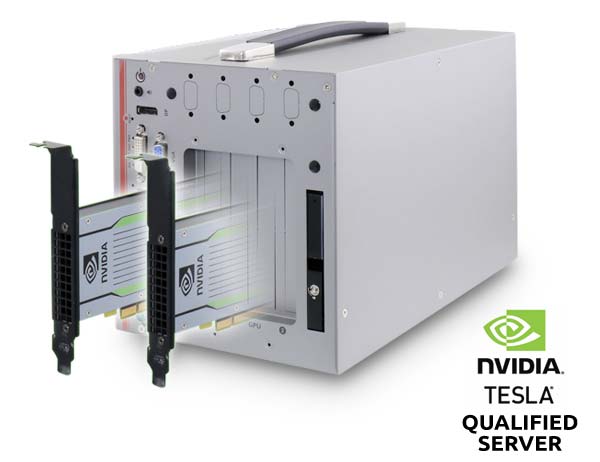 |
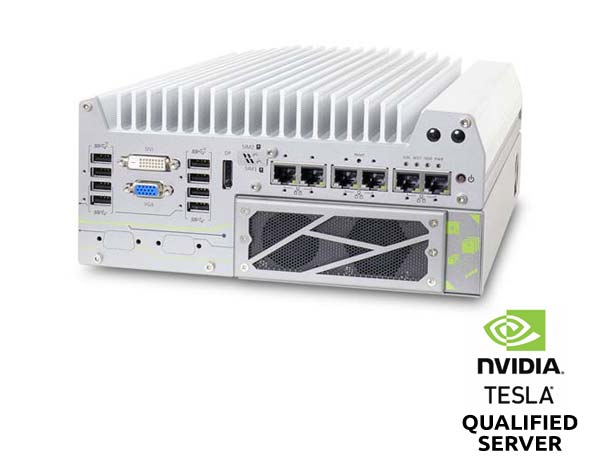 |
 |
 |
||||||||||||||||
| Nuvo-8240GC | Nuvo-7166GC / Nuvo-7164GC | SEMIL-1700GC | SEMIL-1300GC | ||||||||||||||||
|
|
|
|
||||||||||||||||
 |
 |
 |
 |
NVIDIA® Quadro P2200
 |
 |
||||||||
| SEMIL-1700GC | SEMIL-1300GC | ||||||||
|
|
||||||||
 |
 |
NVIDIA® Jetson AGX Xavier™
NVIDIA® RTX 30シリーズ
 |
 |
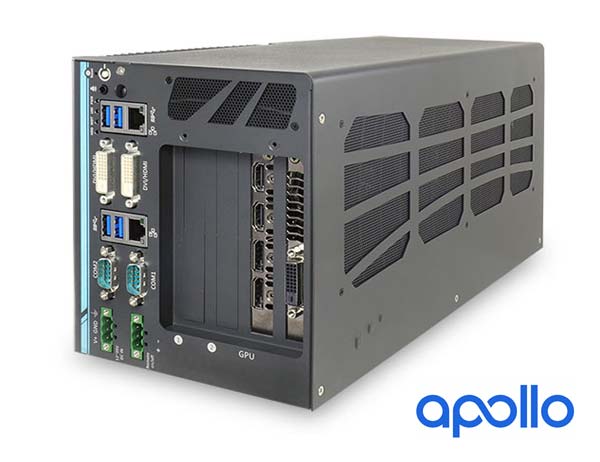 |
||||||||||||
| Nuvo-8208GC | Nuvo-8108GC | Nuvo-6108GC | ||||||||||||
|
|
|
||||||||||||
 |
 |
 |
製品特長
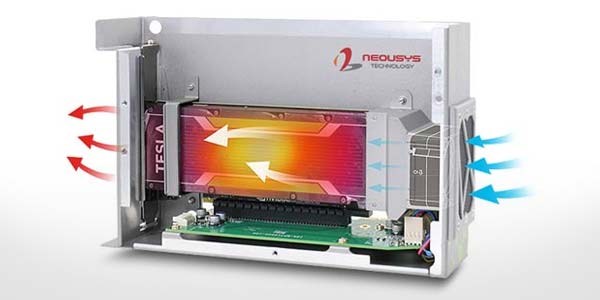
特許を取得した熱設計
特許取得済みの熱設計により、CPUおよびGPUで負荷100%が持続した場合でも、最大60℃の動作温度を保証します。
3 Grmsの振動に耐え
特許取得済みのダンピングブラケットとネジロック機構デザインを備えたシステムにより、車両などの継続的に振動する環境でも、極めて高い信頼性と高い性能を提供することができます。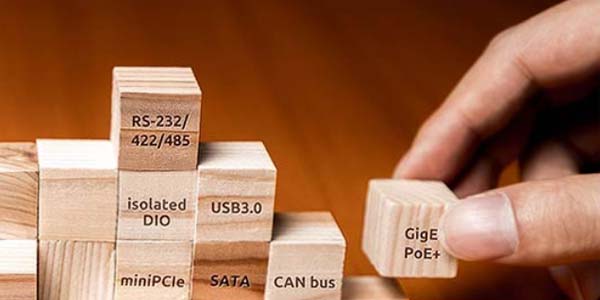
強力な拡張性
拡張カード用のPCIeスロットとNeousys独自のMezIO™インターフェイスをサポート。データ収集、分析、通信などの機能セットを拡張します。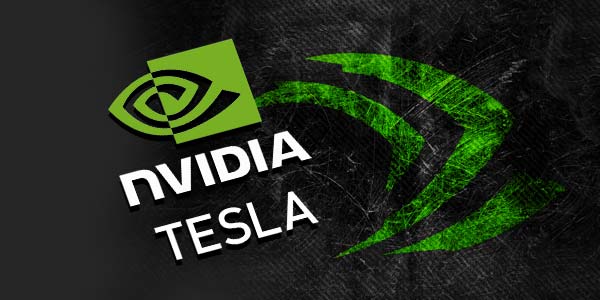
最大2つのNVIDIA® Tesla T4 GPUをサポート
NeousysのGPUエッジAIプラットフォーム(Nuvo-8240GC、Nuvo-7166/64GC)はTesla T4用に特別設計されており、新たに誕生したGPUアクセラレーテッド エッジコンピューティングや高度なAI推論で、驚異的なGPUパフォーマンスを提供します。ビデオを見る
Contact Neousys to assist you with product support:
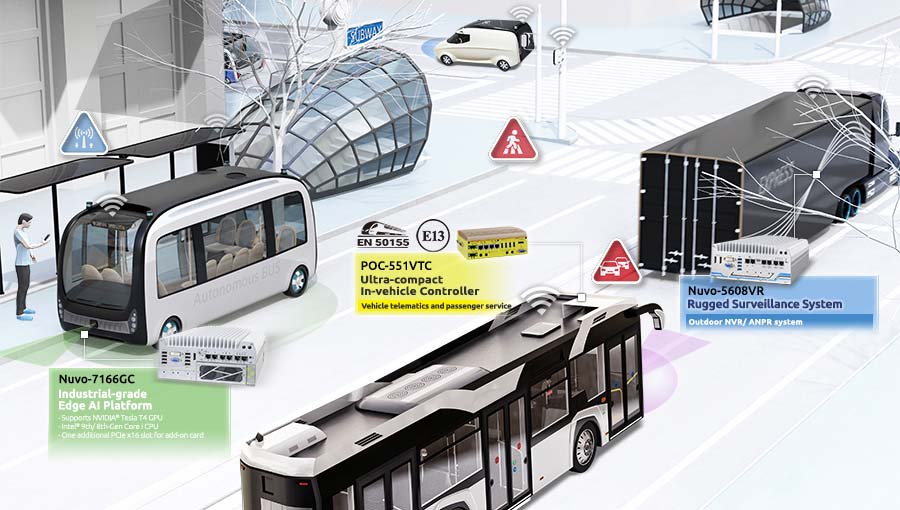
Surveillance Then and Now
Back in the days, surveillance cameras were only placed and found at need-to-be places such as financial institutes, public mass gathering spaces like train stations or any other place that needed stringent security measures. The need for safety and security served as the two main key factors for cameras recording 24/7 that brought people, peace of mind. The idea of surveillance recording is that once something has happened, we can review the videos and find the perpetrator. That is still somewhat the case today but as technologies evolve, the surveillance technologies have also leapfrogged.
Gone are traditional analog videotape recordings with sub-par image resolution. The storage tapes are problematic as they are prone to wear; and are troublesome when searching for video segments. While traditional field site cameras were simply just cameras recording onsite images and offer no other functions. But make no mistake, those were the pinnacles of video surveillance technology at the time.
 Today, video surveillance can be found almost around every corner. At home, people set up their security IP cameras with motion detection warning so they can monitor with their handheld devices; in industrial factories, cameras monitor the safety of workers on the floor that automatically warns people in the control room in case there is a need to shut down machines to prevent disasters from happening; on trains, buses and at stations, cameras and mobile surveillance systems may be linked to law enforcement systems that can collect and analyze data to reduce/ prevent accidents; or they may have onsite video analytic applications such as facial recognition, for immediate countermeasures.
Today, video surveillance can be found almost around every corner. At home, people set up their security IP cameras with motion detection warning so they can monitor with their handheld devices; in industrial factories, cameras monitor the safety of workers on the floor that automatically warns people in the control room in case there is a need to shut down machines to prevent disasters from happening; on trains, buses and at stations, cameras and mobile surveillance systems may be linked to law enforcement systems that can collect and analyze data to reduce/ prevent accidents; or they may have onsite video analytic applications such as facial recognition, for immediate countermeasures.
Mobile Surveillance Technology Expands the Comfort Zone
Though the two main key factors, safety and security remained the same, technologies today have enhanced how we define surveillance camera systems. The inclusion of shock and vibration proof, wide temperature platforms have also facilitated the possibilities of mobile surveillance. The PoE technology makes cameras installations easy to set up while industrial-grade power backup module ensures data integrity in the field. No longer are cameras just for local imagery or video recording, the application of edge AI/ inference and facial recognition technologies have made the cameras in a way, our first line of defense.
Neousys Technology offers a wide variety of edge AI and inference capable rugged embedded computers that support graphics card processing power or NVIDIA T4 for deep learning, Neousys systems are ideal platforms for modern mobile surveillance systems.
防水/防塵性能のIP67規格、究極の耐久性を誇る組み込みGPUコンピュータ
CPU + GPU

製品特長
IP67 規格
SEMILは、耐食性の高いステンレス鋼とアルミニウムを使用したフレームワークで囲まれた非常に耐久性に優れたコンピュータです。Oリングを用いることで防塵・防水のIP67規格にも適応します。
見積もりご依頼
広域温度対応ファンレス Tesla T4
SEMILは、NVIDIA® RTX A2000/ Tesla T4/ Quadro P2200を搭載。周囲温度62°Cを上限にGPUサーマルスロットリングなしで稼動する、特許取得済みの広域温度対応ファンレスGPUコンピュータです。
見積もりご依頼
2U 19"インチ ハーフラック/ラックマウント
究極の耐久性を誇るSEMILは、2U規格19インチハーフラックと独自のブラケットを備えているため、SEMILはラックマウント/ウォールマウントの両方に柔軟に対応できます。
見積もりご依頼
UPS(無停電電源装置)内蔵
予期せぬ電源障害に備えるためUPS(無停電電源装置)を内蔵。突然停電してもAC電源を供給します。特許取得済みスーパーキャパシタ(電気二重層コンデンサ)が停電時のデータ消失を防ぎます。10年以上と長寿命で、従来のバッテリよりも優れた信頼性と寿命を提供します。
見積もりご依頼
Resources for download
Neousys SEMIL IP67 Fanless GPU computer


